Adrienne Minerick works at the forefront of culture change in engineering education. Her impact as a national leader, campus advocate and student mentor has been recognized with the 2022 Michigan Technological University Diversity Award.
A professor of chemical engineering, Minerick is currently Immediate Past President of the American Society for Engineering Education (ASEE). At Michigan Tech, she serves as director and principal investigator (PI) of the ADVANCE initiative. ADVANCE, or Organizational Change for Gender Equity in STEM Academic Professions, is a long-running, multifaceted program funded by the National Science Foundation (NSF) to develop and support the diverse talent pool of engineers and scientists needed to address the world’s grand challenges. Within and across institutions, it forwards the career progress of women and historically underrepresented faculty members in science, technology, engineering and math (STEM).
“When you look at what Dr. Minerick has been able to contribute, not just to Michigan Tech but to the effort to bring diversity, equity, inclusion and a sense of belonging specifically to the STEM fields, she has truly paved the way for many,” said Wayne Gersie, Michigan Tech’s vice president for diversity and inclusion.
"Her leadership with ADVANCE and mentorship of colleagues and students has been transformational. Much of our success in the inaugural Office of the Vice President for Diversity and Inclusion could not have been achieved without her collaboration and sponsorship. Dr. Minerick is a true Michigan Tech treasure."
Advocacy and Allyship in Action
The ongoing academic and organizational shifts Minerick has played a role in bringing about are an important aspect of her work in the diversity, equity and inclusion (DEI) space. But her one-on-one work to help students achieve and thrive professionally and personally has also borne measurable results. She was the advisor and remains a mentor to Tayloria N.G. Adams ’10 ’14, who completed her M.S. and Ph.D. in Chemical Engineering at Michigan Tech. Adams was the first Black woman to earn a chemical engineering doctorate at Tech, and went on to earn a National Science Foundation CAREER Award in 2021.
About the Award
Established in 2014, Michigan Tech’s Diversity Award showcases University faculty and staff who demonstrate exemplary commitment to initiatives that forward diversity and inclusion. Their contributions come in many forms, including recruitment, retention, teaching, research, multicultural programming, cultural competency and community outreach.
The Diversity Award winner receives a $2,500 award and is honored during the annual Faculty Awards celebration in September.
All are welcome to submit Diversity Award nominations, which are due by late April each year.
In her letter of nomination, Adams, now an assistant professor at the University of California Irvine (UCI), detailed how Minerick offered essential mentorship from the moment they began working together. Her support ranged from introducing Adams to prominent researchers in the field and helping her to produce excellent conference presentations and peer-reviewed publications to inviting the single mother and her daughter to lunches and dinners with Minerick’s family.
“Dr. Minerick recognized my unique situation and that my family support system was 20 hours away in Virginia. She played an important role as my academic and MTU family support system while I was a graduate student,” Adams said. “She supported my applications to postdoctoral research positions as well as numerous applications for postdoctoral fellowships, which funded my postdoctoral research. Her recommendations extended to my search for a tenure-track faculty position. She provided guidance through the application and interview process and gave critical advice when it was time to negotiate.”
"Dr. Adrienne Minerick started as my Ph.D. advisor, quickly transitioned to my mentor and, I am happy to say, is now one of my biggest advocates."
$2.5M+
104
56%
1st
Changing Engineering Culture for a Better Tomorrow
Nominator Janet Callahan, dean of the Michigan Tech College of Engineering, said Minerick serves as an example of how to bring about change through offering consistent, literature-based evidence on the importance of diversity, equity, inclusion and a sense of belonging, engaging faculty in programming that assists development, and providing safe places for learning.
"If I can convey in one sentence what Adrienne has done here at MTU, it has been to change the culture here to one that includes inclusiveness as part of what we are trying to do, as a unit goal at all levels."
In her nomination, past ASEE President Stephanie Farrell said Minerick has directly supported the retention and success of underrepresented faculty and students and contributed significantly to culture change in engineering education. Minerick served as chair of the organization’s diversity committee during its Year of Action on Diversity in 2014-15, in which the group made major strides toward actively engaging and promoting diversity in engineering, bringing underrepresented people into the discipline. The ASEE recently continued the vigorous effort, declaring 2021-22 its Year of Impact on Racial Equity.
"Through sustained efforts to advance diversity, equity and inclusion at the university and national levels, Dr. Minerick has made enormous contributions to the advancement of diversity, equity and inclusion in engineering."
In her own words, Minerick traces the origins of how she became involved in DEI work and reflects on the work that remains to be done.
Q: Why is DEI important?
AM: It takes a variety of ideas, creativity and experiences to achieve very unique and valuable problem-solving. Diversity means that end solutions are much more impactful and tied to society than they would be otherwise. The world needs more engineers. We’re not producing enough engineers to solve global problems. It’s extremely important that everyone in the realm of engineering feels appreciated and included — they’re going to be more productive and work to their highest potential. DEI is about keeping the knowledge we’ve gained and bringing in new perspectives for new demographics. We need to offer faculty, students and administrators tangible tools that help them approach the unfamiliar so that we can work together. Dealing with another set of experiences can be intimidating. But it’s an opportunity for learning and bringing in that unique problem-solving.
Q: When and why did you decide to devote so much time and effort to DEI?
AM: Early in my career as a professor, I gradually became aware of cards stacked against people like me — things like differential language, differential treatment, differential expectations, opportunities routed preferentially toward one group and obstacles when trying to innovate.
I was subject to differential rubrics used for performance and pay. For example, at my prior institution, when I was co-author on an article published in PNAS (impact factor of 11.2), it earned fewer annual review merit points than a colleague who published in AIChE Journal (impact factor of 4.0) because mine was “only a proceedings article.” When I received less of a pay raise than male colleagues, even after I earned a CAREER Award, it became apparent that true quality didn’t matter — only the antiquated perceptions of the person judging it.
While these slights affected me personally — my zeal, productivity and confidence — I came to realize that they are also structural, existing within policies and practices that are derived from historic and present societal perceptions. It was a progression from feeling that I needed to prove myself to a building comprehension over time that, as a society, we are harming ourselves with these constructs of who is granted (perceived) credibility to do things. After I was recruited to Tech as an associate professor, I got involved in WISE (now the more inclusive Women in the Academy), which works to support women faculty across Tech to help them be successful in their careers. Many other DEI efforts at Tech have followed from that initial effort.
Q: Tell us more about ASEE and its work. How did 2021-22 become the Year of Impact on Racial Equity?
AM: I attended ASEE because a former Michigan Tech faculty member, Noel Schulz, took me under her wing my first year as a faculty member and said I should attend. It was a different conference from my other professional conferences. At most conferences, I’m the outsider constantly having to prove my competence, with my research presentations undergoing greater scrutiny than those of my colleagues. However, at ASEE, I found a phenomenally welcoming community interested in exploring ideas instead of scrutinizing and beating them up. ASEE provided the mentors and tools to complement my innovative research in dielectrophoresis that successfully earn an NSF Career Award (and most recently the AES Lifetime Achievement Award).
Because ASEE provided a support network for my professional growth, I volunteered in many areas and eventually became a delegate to the newly formed ASEE diversity committee, a committee that came about due to the work of Sarah Rajala, a former ASEE president and a Michigan Tech electrical and computer engineering alumna. I progressed to vice chair and then chair of that committee, which is now the ASEE Commission on Diversity, Equity, and Inclusion (CDEI). The year I transitioned to chair, we petitioned the board to approve and then hosted a Year of Action on Diversity, during which many ASEE initiatives ongoing today had their start.
After George Floyd and the efforts of Black, Indigenous, and faculty of color within ASEE to help educate the engineering community, the ASEE CDEI leadership felt it was time for a new yearlong initiative. This time, in my role as ASEE president last year, I could enthusiastically support and work to amplify the voice of this highly talented and energetic leadership team in educating and developing impactful programs for faculty and administration, engineering design teams and pre-kindergarten through 12th-grade parents and guardians in the Year of Impact on Racial Equity.
Q: You teamed up with past ASEE President Stephanie Farrell to author a response when a letter denigrating the LGBTQIA+ community was published in the society’s Prism magazine. Can you tell us more about that and how it became a platform for improving the climate at ASEE?
AM: The letter showed us where the work needed to focus. It was more than an opportunity for vigorous rebuttal, it was also a catalyst to come together to bring forth the changes we knew needed to happen.
Though the situation happened well before either Stephanie or I served as president, I think it catapulted both of us from being quiet supporters of individuals into being open activists. We really connected while drafting a response letter and organizing safe zone workshops at the conference.
At the time, there was an undercurrent of fear associated with open affiliation with the community. We led by example, wearing rainbow ribbons and handing them out at a booth at the conference, along with educational information. That year was a turning point in visible support for not only LGBTQIA+ individuals, but also other identities that have been historically not acknowledged or disregarded (disabled people veterans; Black, Indigenous, and people of color; and others). It was a turning point from expecting people to be tolerated in the engineering education community only if they practiced cryptic coloration to carefully and strategically conform to the standard dress, talk and behaviors.
"I think we both were shocked to learn how powerful it could be to have straight cisgender individuals advocating for equity for LGBTQIA+ individuals."
After that year, Stephanie Farrell had the great idea of seeking National Science Foundation funding to continue the safe zone training, expand into a virtual community of practice (VCP), and conduct research on LGBTQIA+ representation in engineering. We received the first-ever NSF proposal acknowledging LGBTQIA+ as an important population and launched a steady stream of activities that are self-sustaining to this day.
Start Allyship Where You Are
Minerick authored the chapter “My Ongoing Journey with Allyship” in the recently released text “Queering Stem Culture in US Higher Education.” The book highlights the lived experiences of the queer and trans communities in postsecondary STEM culture as a means to both insight and socially just education pathways. In the chapter, Minerick reflects on her progression and — as one might expect from a research engineer — presents a data visualization that traces her path from nonparticipant to quiet supporter to confident, mindful and vocal advocate.
Q: You lead the NSF-funded ADVANCE Initiative at Michigan Tech. What are some of the most impactful results throughout ADVANCE’s history?
AM: ADVANCE’s theme is to catapult faculty to success, address structural issues,
and evolve culture so that we actively move toward true equity. We work to evolve
structural practices, policies and programs so that every diverse, creative, energetic
faculty we hire at Tech is positioned for success. We focus on retaining faculty and
supporting them to perform to their full potential.
We’ve made progress for three audiences — four, if you include our preparatory activities
that led to the Early Career Management Committees for New Faculty. Advanced Career Management Committees provide career development; resources are primarily for associate professors, although
all tenured faculty are welcome to participate. Advocates and Allies provides friendly
learning environments for men to increase awareness of biases that impact diverse
faculty and the tools available that can help them behave as allies and advocates
for their colleagues. The Academy for Responsive Leadership (ARL) provides educational
resources and venues for department chairs and deans to learn about biases and understand
the active roles they can take to shift practices within their units to create inclusive
climates and retain faculty members.
"Engineers tend to be most comfortable with the quantitative. The reality is that there’s a ton of subjectivity in our discipline and others."
We developed through the grant an ADVANCE Faculty Equity Query Tool (AFEQT) so chairs and deans can compare current and historical data by gender and race/ethnicity on tenure-track and instructional-track faculty. The goal is that, with this data at their fingertips, department chairs can look at resource allocation and assignments and adjust them to be equitable. Further, they can proactively work to change culture to counter historic inequities that have impacted career progression.
“Development, Piloting, and Deployment of an ADVANCE Faculty Equity Query Tool” was selected as an exemplar in the DEI for Data and Analytics category of the 2022 Data and Analytics Horizon Report sponsored by Educause.
Our team is a flat, highly collaborative structure, with each co-PI (principal investigator) taking a lead as appropriate. We weathered a lot of challenges to move these areas forward because navigating status quos and influencing change is not easy, but it is so very important.
Q: What’s next for ADVANCE at Michigan Tech?
AM: ADVANCE has excelled in its previous and present work. Our efforts have made an impact on this campus. President Koubek came to our External Evaluation and Advisory Board this summer and spoke passionately about not only institutionalizing our programs but also working to ensure we maintain the innovation and momentum that keeps our campus moving forward.
As is often the case, external perspectives also bring a team’s efforts into focus. Feedback from ADVANCE’s External Evaluation and Advisory Board after our annual update indicated that we have had the amount of impact at Michigan Tech that this board would expect from an Institutional Transformation Award (an award that is a level higher in funding than the Adaptation Award we’ve worked with). Our team is looking for the next generation of individuals to join the cause.
"We need additional faculty to join the ADVANCE team to continue this truly transformational work. We need to identify and cultivate the next generation of leaders.."
Q: You’ve so far mentored 104 research students. What are your guiding principles
in this important role of supporting your students’ personal and professional growth?
AM: I enjoy working with all students, but undergraduates leave (laughs). I like the
sustained work with graduate students, not just for the value of the mentorship piece,
but because of the benefit of the cohort portion, which creates a community of support.
I find that if I put forth the simple expectation that I’ll show up and we’ll be able
to meet for regular conversations, even virtually across time zones, then we’re able
to work together on whatever the topic might be at that time: submitting proposals,
strategies to publish — or life stuff.

Mentoring is paying it forward in the truest sense. Just as Noel made a difference for me, throughout my career I’ve tried to make the world a better place with more opportunities and fewer obstacles for others. Just as Tayloria notes in her comments, it all matters. All those exclusionary behaviors that I described earlier are detrimental not only to the individual, but also to progress in engineering, science, and society as a whole.
I try to intentionally pause to start at the beginning, to provide context, to ground new knowledge with prior knowledge and to challenge the student to rise to their greatest potential. I strive to be authentic and transparently share my own struggles so that others feel they can be a whole person in these fields. I view myself as a coach who is sharing my own perspectives and experiences so that the person I’m mentoring can use that information to navigate their own way forward.
Instead of ignoring the crappy way students, junior researchers and underrepresented individuals are often treated in academia, I acknowledge it openly and offer tools and perspectives for resiliency and achieving excellence despite having the cards stacked against the person.
"If we want to see academia and research efforts achieve the altruistic goals of sharing knowledge, cultivating new knowledge and developing solutions to problems in our world, each of us needs to actively work to create environments where each and every student feels welcome and appreciated for their unique skills and lived experiences."
I pushed Tayloria Adams, the student who went on to earn the NSF CAREER Award, pretty hard. I wanted to help move her outside of her comfort zone to get the data; I was simultaneously relaying that I believed she could achieve the high bar and conveying the context of why it was important.
The vast majority of my graduate students and many undergraduate researchers have stayed in touch — I think because they believe that I will always be an advocate, through their successes, everyday struggles and failures. I try to tell them that I’ll always be invested in their success.
Q: In the current political and cultural climate, how do you approach difficult conversations?
AM: Avoiding them doesn’t make them go away. I remind myself that most individuals voicing detrimental dogma think they are operating with good intentions. Statements and actions can be the result of a lack: of education, of effort to empathize with people different than themselves or the lack of awareness that society and systems have conditioned them to have subconscious biases. The common point in difficult conversations can be that foundation of good intentions — even when the individual endpoint is different.
At this stage in the progression of my allyship, I’m comfortable with my responses in highly charged situations most of the time. But it didn’t start out that way. There are steps to allyship. And you’re always learning more. For example, advocacy has nuances. Rather than stepping in to defend someone, you have to think about creating a space where that individual feels free to respond or not as they believe the situation warrants. We can’t know, for example, whether an LGBQTIA+ individual wants to speak up in a particular venue. We can only help to create an atmosphere where that expression is possible. The outcome is not up to us.
Earlier in my career, I tried to keep everyone comfortable, but in the last few years, I’ve felt a greater urgency to push against the status quo. That can make people more uncomfortable. But I believe it’s necessary.
"The status quo is dangerous because it enables academia to continue using practices that were developed by a narrow demographic of people for others in that narrow demographic. Conclusions drawn from rigorous research show that the status quo harms our growth, our creativity and our financial bottom line."
Keeping people comfortable means we make — at best — incremental progress on these issues. We like to have conversations about broadening participation with kid gloves and avoid the thorny issues. We need to bring in and encourage more students to pursue engineering/STEM and we also need to retain those already in engineering. However, students who pivot away from an engineering or STEM degree are often pivoting away from engineering/STEM culture, not leaving because they lack the ability to do the topics. But most don’t like to hear this.
Conversations about culture and shifting the way it has always been done is hard. Blaming the individual by contending they couldn’t hack it is easy. The person offering that explanation doesn’t say it to the other person directly. Because of the convenience of the statement, it has been said many times and others don’t ask for evidence that it is true. Reading some of the rigorous research by Dr. Walter Lee and collaborators shows otherwise.
Q: A faculty member since 2009 who has taken on numerous academic leadership roles, you’re also a Michigan Tech alumna (’98). Can you give us your take on the long view of DEI progression at Tech? What has changed? What still needs to change?
AM: I sought out and gravitated into roles where I thought I could make the institution better for others.
In the 1960s, the demographics of most public institutions were very similar. If we follow plots of diversity on the Y axis and time on the X axis, other institutions have demonstrated much greater slopes than we have. Three years ago, Michigan Tech made the list for 17th least diverse campus in the nation. Why?
I suspect the series of deliberations that sided with the status quo time after time have kept us from evolving ahead of the needs of the ever-increasing diverse demographic seeking to attend or work in a STEM school. What needs to change for Michigan Tech to be competitive in the future is to quit hiding behind the status quo, to have the courage to acknowledge the real issues and to experiment with new structures aimed at setting everyone up for success.
Q: You’re an always busy engineer, researcher and entrepreneur, along with numerous
other personal and professional roles. What grounds and centers you? Do you have a
favorite creative outlet or guilty pleasure?
AM: My kids would tell you that I’m an obsessive gardener and builder. By peak season,
cleaning the dirt out from under my fingernails is a regular chore. My partner and
I also try to live as sustainably as possible with a self-built solar array, electric
cars and extensive recycling/upcycling. So, I guess I’m grounded by the fact that
my job does not completely define me. My overarching goal is to try to push the boundaries
to make the world a better place.
Q: What’s one thing we can do today to further equity and inclusion on campus and in our community?
AM: Be open to learning and challenging your own paradigms. I highly recommend attending the Advocates and Allies workshops. There, advocates can walk you through the research and the lived experiences of inequities, then give tools to identify and counter these in our faculty and staff meetings, in our classrooms, in our laboratories and all other places on our campus.
Collaboration is key. ADVANCE is always willing to partner in activities that remove barriers. Collectively, we can shift our climate to help position people for success.
Michigan Technological University is an R1 public research university founded in 1885 in Houghton, and is home to nearly 7,500 students from more than 60 countries around the world. Consistently ranked among the best universities in the country for return on investment, Michigan's flagship technological university offers more than 120 undergraduate and graduate degree programs in science and technology, engineering, computing, forestry, business, health professions, humanities, mathematics, social sciences, and the arts. The rural campus is situated just miles from Lake Superior in Michigan's Upper Peninsula, offering year-round opportunities for outdoor adventure.
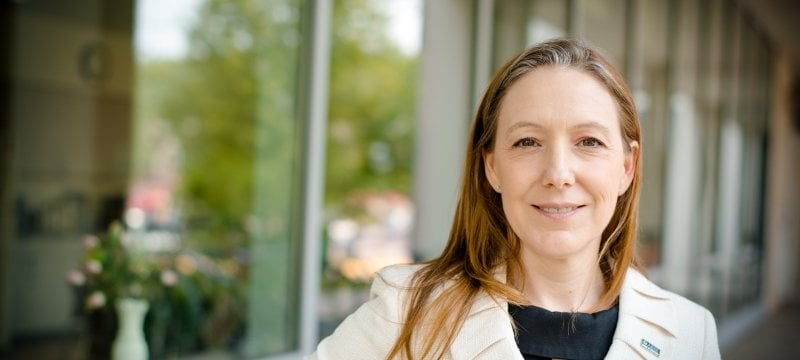


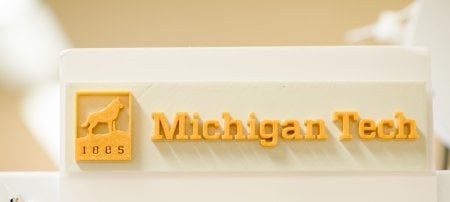
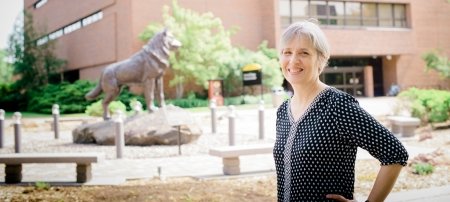
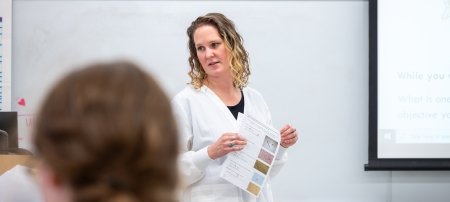
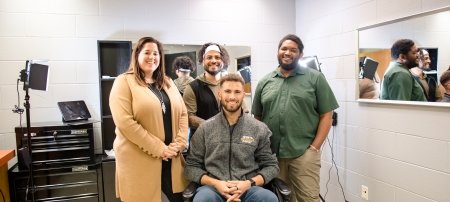
Comments